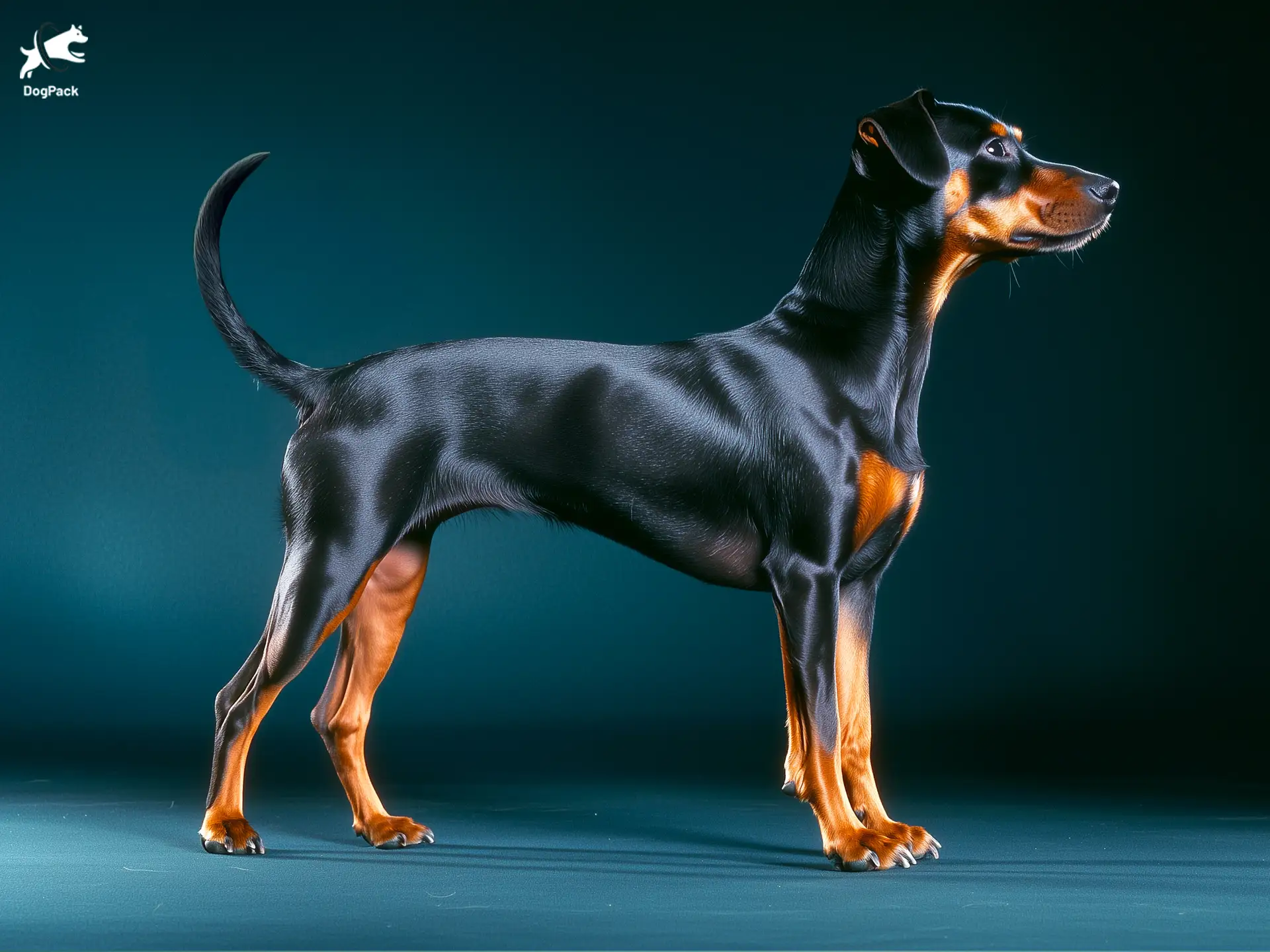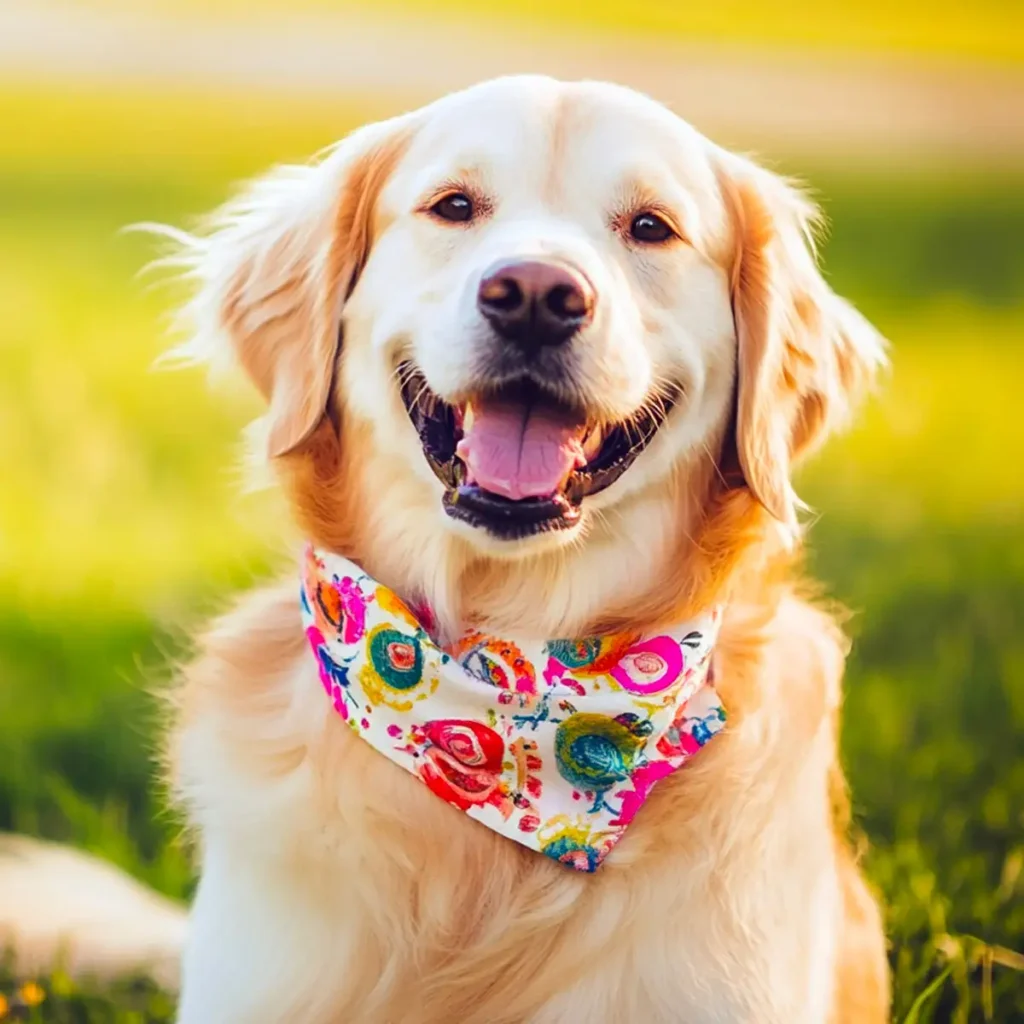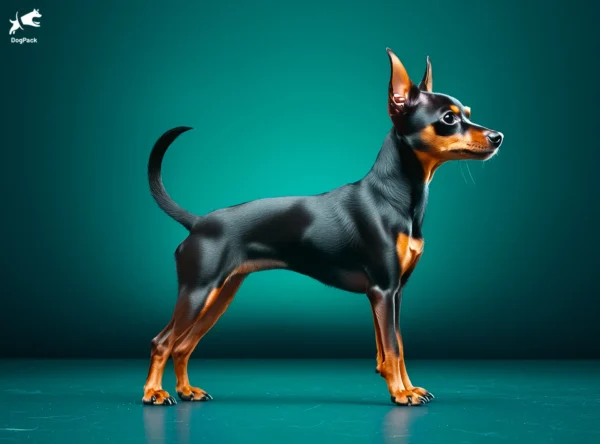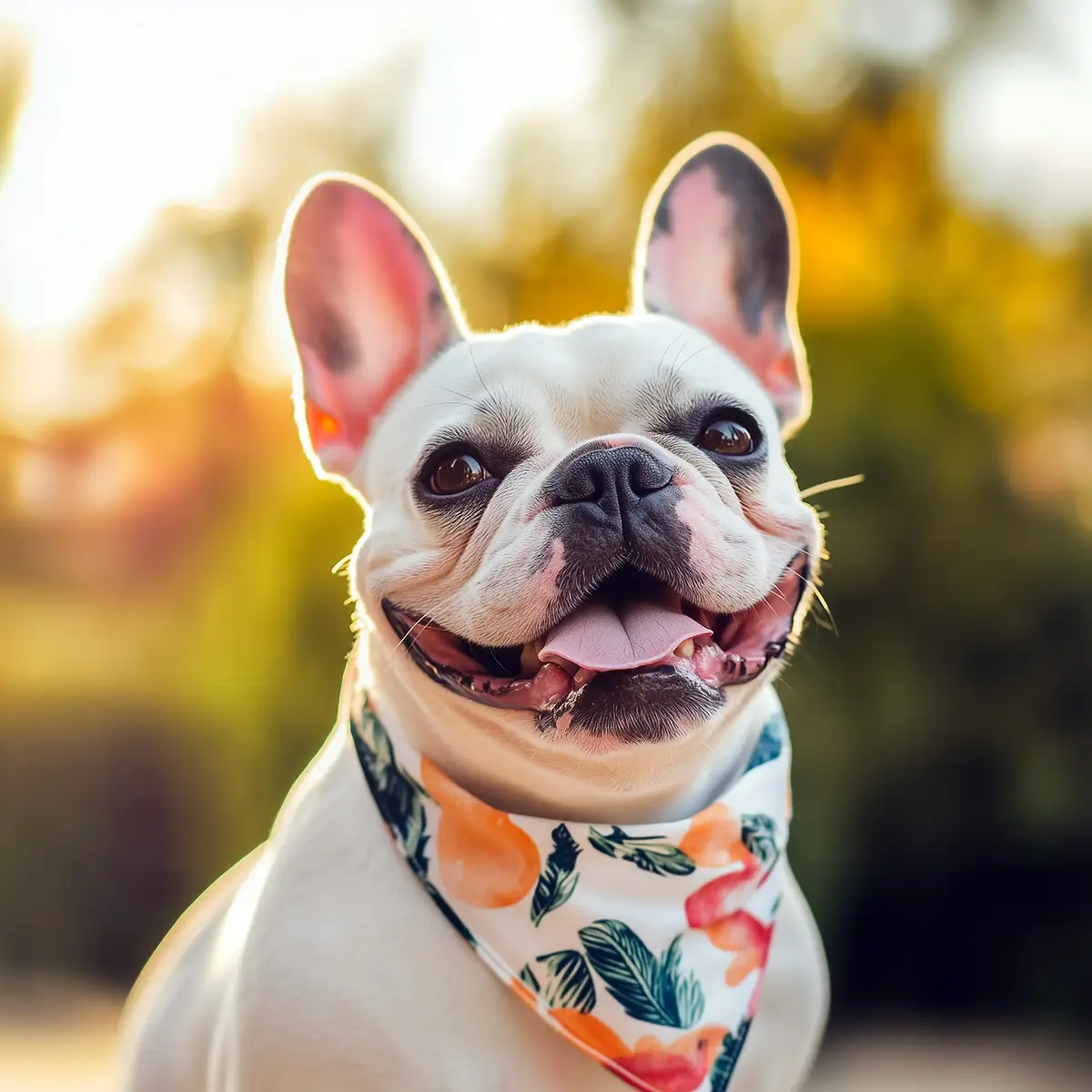Manchester Terrier Dog Breed Info & Overview
The Manchester Terrier boasts a sleek black-and-tan coat, a sharp mind, and a dash of terrier tenacity. Originally bred to tackle pesky rodents, this lively companion quickly found its place in the hearts of dog enthusiasts. Prized for its quick wit and loyal nature, it’s a fantastic choice for someone seeking a bright and active friend.
Characteristics
Pictures
Breed History
Dating back to the 19th century, these sleek black-and-tan dogs emerged from England’s bustling industrial city of Manchester. Their purpose? Hunting rats and other vermin in cramped urban environments, where dexterity and quick reflexes were a must. Resourceful breeders crossed the old Black and Tan Terrier with Whippet-like dogs to bolster their agility, resulting in a swift and tenacious companion.
As the breed became more refined, well-to-do Victorians grew fond of its sharp looks and dignified presence. It was only natural for the newly named “Manchester Terrier” to gain traction in urban homes, prized for both its rodent-catching skills and graceful stature. Before long, this nimble pup trotted into the dog show ring, impressing judges with its confident air and glistening short coat.
Their popularity dipped at times, overshadowed by other terrier cousins, but dedicated enthusiasts ensured the lineage remained pure. With careful preservation and a focus on temperament, modern enthusiasts still celebrate their heritage today. This breed stands as a living nod to England’s rich canine history—an elegant yet scrappy dog that proves small can indeed be mighty.
Temperament, Personality
These terriers are brimming with energy and curiosity, making them endlessly entertaining around the house. Some folks liken their inquisitive nature to having a tiny detective who sniffs out every corner of your home. Despite their persistent need to investigate, they’re known to form deep bonds with their favorite humans, responding best to gentle guidance rather than harsh corrections.
Eager to please, yet occasionally stubborn, this breed thrives on mental stimulation. Toss a puzzle toy their way, and you’ll see them spring into action. They can be reserved around strangers, which often makes them cautious watchdogs. However, consistent socialization ensures they’re polite in social settings and less prone to bouts of shyness or anxiety.
A well-socialized Manchester Terrier typically does great with children who’ve been taught to respect a dog’s space. They can also coexist peacefully with other pets if introduced gradually—though it’s wise to remember their hunting heritage. With an engaging approach and plenty of positive reinforcement, they can shine as devoted family members, enjoying evening cuddles as enthusiastically as daytime adventures.
Physical Characteristics
Sporting a compact, athletic frame, this breed epitomizes elegance in a smaller package. Long, tapered muzzles and upright, V-shaped ears give them a keen, alert look. A notable hallmark is their glossy black coat with precisely placed tan markings over the muzzle, chest, and legs. This distinct coloration, paired with a graceful gait, commands attention during walks in the neighborhood.
Despite a lean build, they’re surprisingly sturdy and carry themselves with an air of confidence. Muscular hindquarters assist in swift turns and explosive bursts of speed—traits inherited from their vermin-hunting days. Add a pair of bright, intelligent eyes, and it’s clear why admirers call them the “Gentleman’s Terrier.” Even with their refined appearance, they never shy away from an energetic romp.
Owners often appreciate how their sleek form requires minimal grooming, yet still has a polished finish. Whether you opt for the standard variety or the smaller toy version, you’ll notice how nimble these dogs are on their feet. The Manchester Terrier is a perfect example of big personality in a compact build, balancing refined looks with a spirited readiness for action.
Health Issues
Like many purebred dogs, they can be predisposed to certain hereditary conditions. One to watch is patellar luxation, where the kneecap shifts out of place. Regular vet check-ups and maintaining a healthy weight can go a long way in preventing or managing knee issues. Don’t let them leap off high furniture too often, as those little legs can be vulnerable.
Another concern sometimes seen in the breed is Von Willebrand disease, a blood clotting disorder. Reputable breeders will test their breeding stock to minimize the likelihood of passing on this genetic trait. It’s also worth keeping an eye out for eye conditions such as progressive retinal atrophy. Early detection and consistent vet care are critical to preserving good vision.
On a brighter note, these terriers are generally quite robust and known for their longevity. Many gracefully age well beyond 13 years, provided they eat a balanced diet and stay active. Scheduling annual check-ups helps catch any minor ailments early. With attentive care, your Manchester Terrier can remain spry and energetic well into its golden years.
Grooming Needs
One of the perks of owning this breed is the low-maintenance coat. A quick once-over with a soft-bristle brush or grooming mitt each week usually keeps shedding in check. Unlike those fluffy pups that require endless brushing, the short coat is a breeze. Still, routine checks for skin irritations or parasites remain essential, especially if they spend time outdoors exploring.
Regular nail trims are crucial, as active terriers can develop discomfort if claws grow too long. Most do fine with a monthly clipping, but the sound of their nails clicking on the floor is your clue to break out the trimmers. Ears should be gently inspected and cleaned, watching for any redness or debris that might signal infection.
Bathing can be kept to a minimum—every few months or whenever your buddy goes digging in less-than-pristine spots. A gentle dog shampoo will keep their coat gleaming without stripping natural oils. Follow up with a quick towel dry, and you’ll soon see their smooth coat bounce right back into shape. Overall, grooming your Manchester Terrier doesn’t demand a fancy salon schedule.
Exercise Requirements
These busybodies crave a daily burst of activity—think brisk walks around the neighborhood, a romp in the backyard, or a thrilling game of fetch. They excel at canine sports like agility, showcasing their swift reflexes. For mental stimulation, you can hide treats around the house and let them sniff out the goodies. This breed shines when you embrace its inherent need to move.
A good 30–60 minutes of active play or structured exercise is usually plenty, but don’t be surprised if they’re ready for more. If you lead a laid-back lifestyle, consider short training games throughout the day to keep them mentally engaged. Many owners find that a small puzzle toy or a quick trick-training session in the evening helps channel excess energy before bedtime.
City dwellers can rest assured—your dog doesn’t require a massive yard to stay content. Apartment living can work if you commit to consistent walks and interactive play. That said, a bored Manchester Terrier might engage in unwanted behaviors like chewing or digging. Keep them entertained, and they’ll be more than happy to curl up beside you after a day of well-earned adventures.
Training Tips
These terriers are famously bright, but their independent streak means they sometimes test boundaries. Setting up a predictable routine works wonders. Short, positive training sessions—with treats or enthusiastic praise—tend to keep them eager. Punitive methods, on the other hand, can sour their spirit and lead to stubbornness. Offer clear guidance, and watch how quickly they pick up new tricks.
Socialization is paramount. Expose them to various sounds, sights, and experiences from a young age. This is especially true if you want them to be comfortable with visitors or other pets. Consistency is key: if you invite your pup on the couch sometimes but scold them other times, confusion ensues. Keep the rules firm yet fair, and they’ll respect you as a reliable leader.
Because they’re sensitive and prefer a strong bond with their human, crate training is an excellent option—particularly for those who value a tidy home. Make the crate cozy with a soft blanket and safe chew toys, turning it into a den rather than a prison. With patience and a dash of humor, training your Manchester Terrier can be a fun journey for both of you.
Nutrition, Diet
Given their active nature, a Manchester Terrier benefits from a protein-rich formula that supports muscle tone. Look for high-quality dog food where meat tops the ingredient list, ensuring they get essential amino acids. Steer clear of feeds loaded with cheap fillers, as it’s vital to maintain lean body condition for those sprightly terrier tasks. Whole grains or nutrient-packed vegetables can round out their meals.
Portion sizes should reflect your dog’s size and energy level. An adult Manchester Terrier weighing around 15 pounds often does well on ¾ to 1 cup of kibble split into two meals daily. If your dog is closer to 20 pounds, you might adjust closer to 1¼ cups. Always monitor their waistline: you should feel their ribs without pressing too hard, but not see them protruding.
Some individuals may thrive with a mix of dry and canned dog food for added moisture. Prioritize formulas with balanced fats and vitamins to keep coats shiny. Watch for potential sensitivities, especially to certain grains. If you notice any stomach upsets or itchy skin, consult a vet about switching to a hypoallergenic or sensitive-stomach formula. Proper nutrition helps keep these agile dogs at peak performance.
Adoption, Breeders
Enthusiasts often begin their search through the American Manchester Terrier Club or local breed-specific rescues that specialize in rehoming. These sources are a great way to find dogs who need a second chance at a loving home. If adopting isn’t possible, attending breed events or dog shows can help you connect with ethical breeders who prioritize health and temperament above all else.
You might also explore reputable adoption platforms like Adopt-a-Pet for available Manchester Terriers near you. When buying from a breeder, ensure they provide records of health screenings, particularly for knee and eye conditions. Meeting at least one parent dog (if available) lets you gauge temperament and overall well-being. Transparent breeders welcome questions and will guide you through any concerns you might have.
Above all, avoid impulse purchases or sketchy online listings. A knowledgeable breeder or rescue group will happily share insights on this breed’s quirks, grooming needs, and potential health issues. This ensures that new owners are prepared for the responsibility ahead. Whether you opt to adopt or purchase, you’ll want to find a pup whose personality meshes with your own—leading to a long, harmonious partnership.
Family Pet?
If your family enjoys interactive play, this breed can fit right in. These perky dogs often bond closely with the household, reveling in any activity that involves their loved ones. Gentle, well-supervised children will likely find a loyal friend who’s up for games of fetch and backyard exploring. However, teach kids that even a small pup needs personal space to avoid accidental nips.
Regular family walks or weekend outings to the park will keep them from getting bored—and a bored pup may resort to chasing anything that moves. Make sure all family members follow the same training rules. Consistency means fewer mixed signals, creating a calmer environment for everyone. With proper guidance, they settle well into a lively home and thrive on constant engagement.
The Manchester Terrier can live happily alongside other pets if introduced gradually and supervised until they learn the ground rules. Their terrier instincts may kick in around smaller critters, but patient socialization helps them understand friend from foe. Overall, they blend nicely into households that offer the right balance of companionship and entertainment—perfect for families who relish an active, friendly sidekick.
Right For You?
Active individuals who savor short training bursts and daily walks are often the best match for this breed. If you prefer calm evenings and aren’t keen on a curious shadow following you around, think twice before bringing one home. But for those who love a dog with a playful spark—and who don’t mind a bit of terrier attitude—the Manchester Terrier can be a delight.
Apartment dwellers will appreciate its smaller size, though the dog’s watchdog instincts mean it can be vocal if untrained. Families or singles who want a bright, attentive companion often discover that these dogs fill the home with boundless affection and plenty of entertainment. Ultimately, if you’re prepared to meet their physical and mental needs, you’ll find they reward you with unwavering loyalty.
Conclusion
With its sleek appearance and lively spirit, the Manchester Terrier is an endearing companion for owners who welcome a dash of energy in daily life. This breed’s quick mind and eagerness to bond make for a rewarding relationship, provided you offer consistent training and affection. Whether you’re seeking a walking buddy or a vigilant little watchdog, this terrier’s charm might just win you over.
FAQs
-
Why do Manchester Terriers have such thin ears compared to other terriers?
Manchester Terriers were bred for speed and agility, and their thin, naturally erect or folded ears help reduce drag while running. Their ear shape also aids in enhancing their acute hearing, which was crucial for their historical role as ratters and hunters.
-
Do Manchester Terriers have webbed feet?
Yes, Manchester Terriers have slightly webbed feet, which helps them be more agile and efficient runners. This feature was particularly useful for chasing prey over uneven terrain, as it provides better traction and stability.
-
Why do Manchester Terriers often sit with their front legs crossed?
This breed is known for its elegant, cat-like sitting posture, often crossing their front paws. This behavior is linked to their graceful and refined body structure, as well as their keen attention to surroundings, a trait inherited from their hunting ancestry.
-
Can a Manchester Terrier’s coat change color over time?
Manchester Terrier puppies are born with black and tan markings, but their tan areas may darken slightly or develop richer hues as they mature. However, their coat pattern remains the same, as their distinctive markings are a defining breed trait.
-
Why do Manchester Terriers sometimes “dig” at blankets or couches?
Manchester Terriers often dig or burrow into blankets because of their instinct to create a cozy den-like space. This behavior dates back to their terrier ancestry, where they would dig out prey or burrow for warmth and security. Providing a soft, designated blanket can satisfy this instinct.
Breed Ratings
Manchester Terriers are quick learners that thrive on mental challenges.
They love games and interaction, though they may wind down sooner than high-octane breeds.
Daily walks and play sessions are a must to keep them mentally and physically content.
Minimal shedding thanks to their short coat, but they do shed some hairs year-round.
Bred for vermin control, they still carry a strong instinct to chase smaller animals.
A quick brush and occasional bath keep their coat looking polished and healthy.
Smart and eager, though they may test boundaries if training is inconsistent.
They manage solo time if well-exercised, but too much isolation can lead to boredom.
They make good watchdogs and might bark at new stimuli, but proper training can minimize excessive noise.
Very low drool factor, keeping cleanup simple.
Generally fine with other pups if socialized early, but can be territorial.
Typically robust, though susceptible to a few hereditary conditions.














